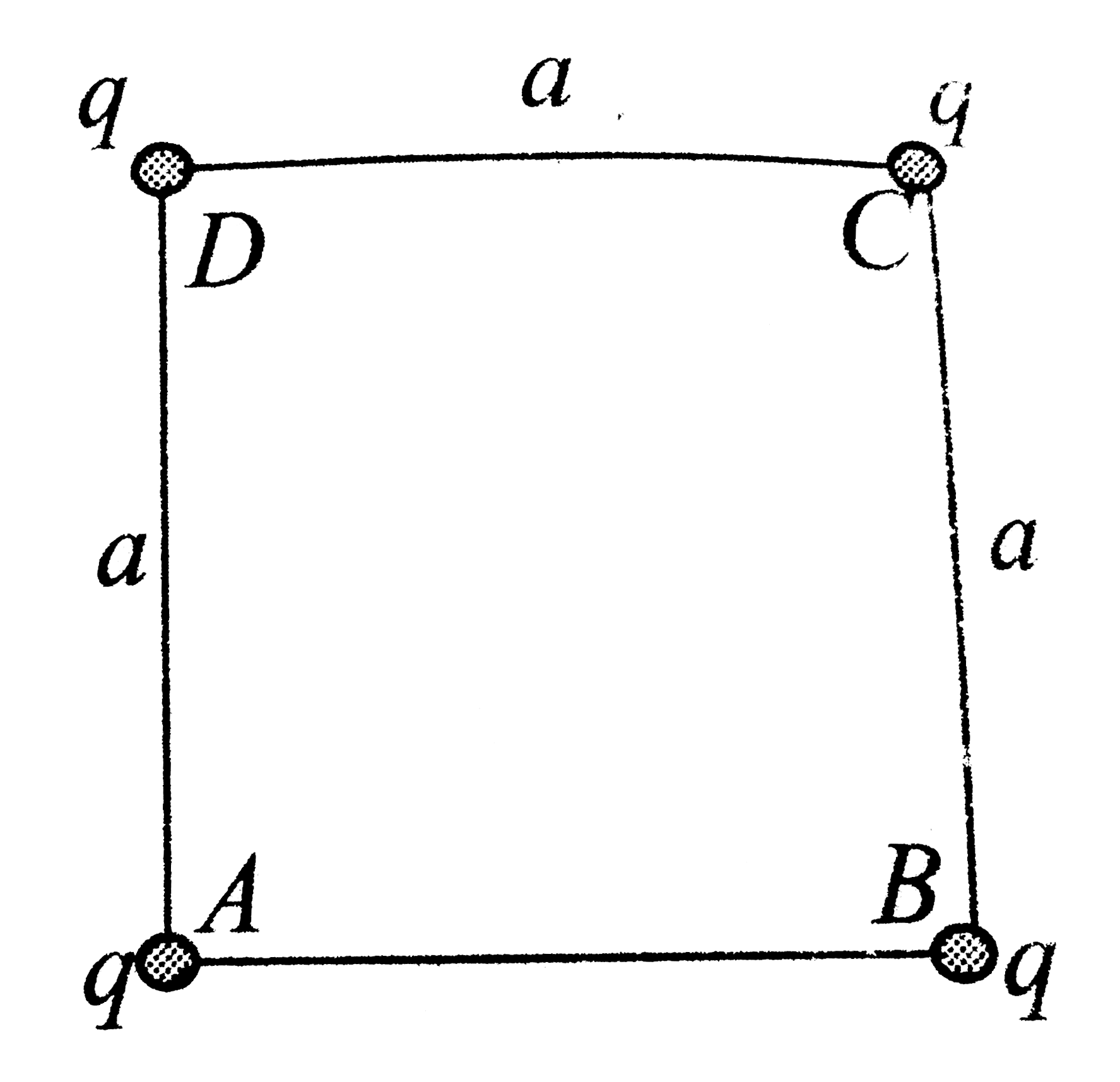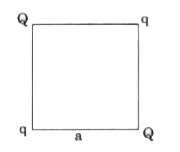A point charge Q is placed at the corner of a square of side a. Find the flux through the square.
To find the electric flux through a square surface when a point charge Q is placed at one of its corners, we can follow these steps:
Step 1: Understand the Concept of Electric Flux
Electric flux (Φ) through a surface is defined as the number of electric field lines passing through that surface. Mathematically, it is given by the integral:
Φ=∫E⋅dS
where E is the electric field and dS is the differential area vector of the surface.
Step 2: Determine the Electric Field due to the Point Charge
For a point charge Q, the electric field E at a distance r from the charge is given by:
E=kQr2
where k is Coulomb's constant. The direction of the electric field is radially outward from the charge.
Step 3: Analyze the Geometry of the Problem
In this case, the point charge Q is placed at one corner of the square. The square has a side length a. The electric field lines will emanate from the charge and will not be perpendicular to the surface of the square.
Step 4: Determine the Angle Between Electric Field and Area Vector
The area vector dS of the square surface is perpendicular to the surface. Since the electric field lines are directed away from the charge, the angle θ between the electric field E and the area vector dS of the square is 90 degrees.
Step 5: Calculate the Electric Flux
Since the angle θ=90∘:
cos(90∘)=0
Thus, the flux through the square becomes:
Φ=∫E⋅dS=E⋅S⋅cos(90∘)=E⋅S⋅0=0
where S is the area of the square.
Conclusion
The electric flux through the square surface is:
Φ=0
Electric flux (Φ) through a surface is defined as the number of electric field lines passing through that surface. Mathematically, it is given by the integral:
Φ=∫E⋅dS
where E is the electric field and dS is the differential area vector of the surface.
For a point charge Q, the electric field E at a distance r from the charge is given by:
E=kQr2
where k is Coulomb's constant. The direction of the electric field is radially outward from the charge.
In this case, the point charge Q is placed at one corner of the square. The square has a side length a. The electric field lines will emanate from the charge and will not be perpendicular to the surface of the square.
The area vector dS of the square surface is perpendicular to the surface. Since the electric field lines are directed away from the charge, the angle θ between the electric field E and the area vector dS of the square is 90 degrees.
Since the angle θ=90∘:
cos(90∘)=0
Thus, the flux through the square becomes:
Φ=∫E⋅dS=E⋅S⋅cos(90∘)=E⋅S⋅0=0
where S is the area of the square.
The electric flux through the square surface is:
Φ=0
Topper's Solved these Questions
- ELECTRIC FLUX AND GAUSS LAWBOOK - CENGAGE PHYSICSCHAPTER - ELECTRIC FLUX AND GAUSS LAWEXERCISE - Example
7 Videos
- ELECTRIC FLUX AND GAUSS LAWBOOK - CENGAGE PHYSICSCHAPTER - ELECTRIC FLUX AND GAUSS LAWEXERCISE - Exercise 2.1
16 Videos
- ELECTRIC CURRENT AND CIRCUITBOOK - CENGAGE PHYSICSCHAPTER - ELECTRIC CURRENT AND CIRCUITEXERCISE - Interger
8 Videos
- ELECTRIC POTENTIALBOOK - CENGAGE PHYSICSCHAPTER - ELECTRIC POTENTIALEXERCISE - DPP 3.5
14 Videos
Similar Questions
A point charge Q is placed at the corner of a square of side a, then find the flux through the square.

View SolutionFour positive point charges Q are placed at the corners of a square of side a. Calculate the charge that should be placed at the centre so that system remains in equilibrium.
View Solution
Knowledge Check
A point charge q is placed at one corner of a cube of edge a. The flux through each of the cube faces is
Aqε0Bq16ε0Cq24ε0Dq48ε0Four identical charges i.e. q is placed at the corners of a square of side a. The charge Q that must be placed at the centre of the square such that the whole system of charges in equilibrium is
Aq4Bq4[2√2+1]C−q4[2√2+1]D−q4[3√3+1]
Four identical point charges q are placed at four corners of a square of side a. Find the potential energy of the charge system.
 .
.
View SolutionFour identical charges q are placed at the corners of a square of side a. Find the potential energy of one of the charges due to the remaining charges.
 .
.
View SolutionFour point charges are placed at the corners of a square of side l. Calculate potential at the centre of square.

View SolutionFour point charges Q.q Q and q are placed at the corners of a square side 'a' as shown in the figures.

Find the resultant electric force on a charge Q,
View SolutionThree charges, each equal to q, are placed at the three. corners of a square of side a . Find the electric field at. the fourth corner.
View SolutionFour point charges Q.q Q and q are placed at the corners of a square side 'a' as shown in the figures.

Find the Potential energy of this system.
View Solution